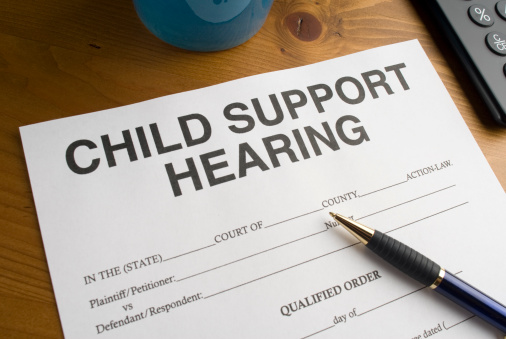 Divorce is a family event that impacts children of all ages.There has been an uptick of divorces for middle-aged and older couples whose children may have already launched their adult lives.Just because children are not living under the same roof with a parent or parents does not mean their lives won’t be deeply affected by family changes that will occur following a divorce.
Divorce is a family event that impacts children of all ages.There has been an uptick of divorces for middle-aged and older couples whose children may have already launched their adult lives.Just because children are not living under the same roof with a parent or parents does not mean their lives won’t be deeply affected by family changes that will occur following a divorce.
At Daisy Camp, I have heard many sad stories of communication breakdowns between parents and their adult children during and after a divorce.Adult children experience unique emotional distress and practical challenges. Regardless of age, children can feel caught in the middle if parents remain in conflict.In fact, adult children can experience a heightened sense of betrayal and confusion about what has happened to their family of origin
Here are three considerations for divorcing parents of adult children:
1. It is helpful for adult children if parents are able to inform them about the divorce with a thoughtfully prepared joint We Statement.This allows parents to be more in charge of the message and the tone, and may gently discourage adult children from feeling as though they are expected to take sides or determine who is to blame.A Neutral Child Specialist can assist parents in the creation of a We Statement.
2. Adult children will continue to have personal and family-centered milestones to celebrate, including graduations, engagements, marriages and births of grandchildren. Advance planning and clear communication with adult children about parents’ readiness and willingness to jointly participate can reduce anxiety for adult children.If parents are not ready and willing to jointly participate, being able to constructively problem solve with children so the events can proceed without undue drama is also helpful to them.A worst-case scenario for adult children is feeling helplessly caught in a power struggle between parents for every family event.
3. Adult children may ask difficult questions, and parents need to be prepared to answer honestly but without making their children feel the necessity of taking sides.Keeping children at the center and out of the middle can be especially challenging if there has been an infidelity or other breach of trust in the marriage.Under these circumstances, it can be especially valuable for divorcing parents to get the support and guidance of a neutral mental health professional.
Collaborative Team Practice provides access to skilled mental health expertise from a Neutral Child Specialist or Neutral Coach to guide parents to support their adult children through a difficult transition that will impact the rest of their lives.It is a privilege to help parents create a legacy of healing and respect for their adult children and grandchildren.
 How to provide financially for children after divorce has been a much-discussed topic for decades. Courts have traditionally used child support guidelines established by state government to calculate a monthly payment from one parent to the other. The Minnesota guideline child support calculator incorporates a number of variables, including both parents’ incomes, number of children, parenting time percentages, and children’s medical and day care costs, in arriving at a monthly payment amount. While statutory formulas produce a number, they don’t always resolve the issue. Many unanswered questions may remain, such as:
“Is summer camp included in my child support payment?”
“Do I have to contribute toward dance lessons on top of my child support?”
“Our child needs private tutoring … does my ex have to pay half?”
“Who pays for hockey equipment and ice time?”
Ambiguity often results in conflict. Some couples return to court again and again to try to resolve questions like these. The emotional and financial costs of repeated court appearances add up in a hurry.
The Collaborative divorce process takes a different approach toward paying the children’s direct and indirect expenses. Parents compile a list of their kids’ direct expenses (clothing, haircuts, school lunches, daycare, summer camps, extracurricular activities, etc.) and then discuss options for paying these expenses. Some couples decide to fund a joint children’s account to be used solely for enumerated expenses. Others divide the expenses with mom paying some and dad paying some. Others decide to use the guideline calculator, spelling out how any additional expenses will be covered. Indirect expenses (housing and food) are included in each parent’s budget and are usually part of a more general discussion about support. Collaborative support agreements typically include periodic reviews allowing for adjustments as parents’ incomes and the children’s needs change. Plans like these can preemptively avoid repeated unpleasant discussions in the years following divorce.
If you are interested in learning more about the Collaborative process, please visit The Collaborative Law Institute of Minnesota’s website.
How to provide financially for children after divorce has been a much-discussed topic for decades. Courts have traditionally used child support guidelines established by state government to calculate a monthly payment from one parent to the other. The Minnesota guideline child support calculator incorporates a number of variables, including both parents’ incomes, number of children, parenting time percentages, and children’s medical and day care costs, in arriving at a monthly payment amount. While statutory formulas produce a number, they don’t always resolve the issue. Many unanswered questions may remain, such as:
“Is summer camp included in my child support payment?”
“Do I have to contribute toward dance lessons on top of my child support?”
“Our child needs private tutoring … does my ex have to pay half?”
“Who pays for hockey equipment and ice time?”
Ambiguity often results in conflict. Some couples return to court again and again to try to resolve questions like these. The emotional and financial costs of repeated court appearances add up in a hurry.
The Collaborative divorce process takes a different approach toward paying the children’s direct and indirect expenses. Parents compile a list of their kids’ direct expenses (clothing, haircuts, school lunches, daycare, summer camps, extracurricular activities, etc.) and then discuss options for paying these expenses. Some couples decide to fund a joint children’s account to be used solely for enumerated expenses. Others divide the expenses with mom paying some and dad paying some. Others decide to use the guideline calculator, spelling out how any additional expenses will be covered. Indirect expenses (housing and food) are included in each parent’s budget and are usually part of a more general discussion about support. Collaborative support agreements typically include periodic reviews allowing for adjustments as parents’ incomes and the children’s needs change. Plans like these can preemptively avoid repeated unpleasant discussions in the years following divorce.
If you are interested in learning more about the Collaborative process, please visit The Collaborative Law Institute of Minnesota’s website.  How to provide financially for children after divorce has been a much-discussed topic for decades. Courts have traditionally used child support guidelines established by state government to calculate a monthly payment from one parent to the other. The Minnesota guideline child support calculator incorporates a number of variables, including both parents’ incomes, number of children, parenting time percentages, and children’s medical and day care costs, in arriving at a monthly payment amount. While statutory formulas produce a number, they don’t always resolve the issue. Many unanswered questions may remain, such as:
“Is summer camp included in my child support payment?”
“Do I have to contribute toward dance lessons on top of my child support?”
“Our child needs private tutoring … does my ex have to pay half?”
“Who pays for hockey equipment and ice time?”
Ambiguity often results in conflict. Some couples return to court again and again to try to resolve questions like these. The emotional and financial costs of repeated court appearances add up in a hurry.
The Collaborative divorce process takes a different approach toward paying the children’s direct and indirect expenses. Parents compile a list of their kids’ direct expenses (clothing, haircuts, school lunches, daycare, summer camps, extracurricular activities, etc.) and then discuss options for paying these expenses. Some couples decide to fund a joint children’s account to be used solely for enumerated expenses. Others divide the expenses with mom paying some and dad paying some. Others decide to use the guideline calculator, spelling out how any additional expenses will be covered. Indirect expenses (housing and food) are included in each parent’s budget and are usually part of a more general discussion about support. Collaborative support agreements typically include periodic reviews allowing for adjustments as parents’ incomes and the children’s needs change. Plans like these can preemptively avoid repeated unpleasant discussions in the years following divorce.
If you are interested in learning more about the Collaborative process, please visit The Collaborative Law Institute of Minnesota’s website.
How to provide financially for children after divorce has been a much-discussed topic for decades. Courts have traditionally used child support guidelines established by state government to calculate a monthly payment from one parent to the other. The Minnesota guideline child support calculator incorporates a number of variables, including both parents’ incomes, number of children, parenting time percentages, and children’s medical and day care costs, in arriving at a monthly payment amount. While statutory formulas produce a number, they don’t always resolve the issue. Many unanswered questions may remain, such as:
“Is summer camp included in my child support payment?”
“Do I have to contribute toward dance lessons on top of my child support?”
“Our child needs private tutoring … does my ex have to pay half?”
“Who pays for hockey equipment and ice time?”
Ambiguity often results in conflict. Some couples return to court again and again to try to resolve questions like these. The emotional and financial costs of repeated court appearances add up in a hurry.
The Collaborative divorce process takes a different approach toward paying the children’s direct and indirect expenses. Parents compile a list of their kids’ direct expenses (clothing, haircuts, school lunches, daycare, summer camps, extracurricular activities, etc.) and then discuss options for paying these expenses. Some couples decide to fund a joint children’s account to be used solely for enumerated expenses. Others divide the expenses with mom paying some and dad paying some. Others decide to use the guideline calculator, spelling out how any additional expenses will be covered. Indirect expenses (housing and food) are included in each parent’s budget and are usually part of a more general discussion about support. Collaborative support agreements typically include periodic reviews allowing for adjustments as parents’ incomes and the children’s needs change. Plans like these can preemptively avoid repeated unpleasant discussions in the years following divorce.
If you are interested in learning more about the Collaborative process, please visit The Collaborative Law Institute of Minnesota’s website. 

 Peace is possible though we are surrounded by high conflict. In the recent words of former Secretary of State Madeleine Albright, “The world is a mess.” Messiness occurs when people are unable or unwilling to resolve differences without wars of words or weapons. This occurs not only globally but also on a personal scale. And for all the extraordinary human costs of violent conflict, the most deeply distressing is its impact on children.
The end of a marriage is not unlike the breaking up of a country based on sectarian differences. Is it possible to disconnect without civil war? Yes, but one must be mindful of the path one is choosing, and deliberately opt to not do battle. Though sometimes complicated, peaceful resolutions are possible if the focus remains the safety and wellbeing of children.
I do not believe conflict is inevitable, because for every cause of conflict there is an inverse possibility. In our day-to-day lives, we can choose a path of peace. We can elect to follow
Peace is possible though we are surrounded by high conflict. In the recent words of former Secretary of State Madeleine Albright, “The world is a mess.” Messiness occurs when people are unable or unwilling to resolve differences without wars of words or weapons. This occurs not only globally but also on a personal scale. And for all the extraordinary human costs of violent conflict, the most deeply distressing is its impact on children.
The end of a marriage is not unlike the breaking up of a country based on sectarian differences. Is it possible to disconnect without civil war? Yes, but one must be mindful of the path one is choosing, and deliberately opt to not do battle. Though sometimes complicated, peaceful resolutions are possible if the focus remains the safety and wellbeing of children.
I do not believe conflict is inevitable, because for every cause of conflict there is an inverse possibility. In our day-to-day lives, we can choose a path of peace. We can elect to follow 





 When you are ready to start a divorce, nothing creates more frustration than the reluctant spouse. How are you supposed to move forward with your life when your husband or wife doesn’t want a divorce? Here is my advice for dealing with the spouse who is dragging their feet.
1. Keep your long-term goals in the forefront, rather than taking short-term aggressive action.
A friend of mine from another state called me recently to tell me about her meeting with a divorce lawyer. My friend wants a divorce; her husband doesn’t. The lawyer said she ought to serve and file divorce papers on her husband and tell her three children about the divorce by herself so she controlled the story to the kids.
This kind of advice is what gives lawyers a bad name. Like most people with kids, my friend wants to protect them from conflict and have a good co-parenting relationship after the divorce. That means she has to work with her husband, not set up a firestorm of conflict by launching an aggressive attack.
2. Get the right support to help your spouse.
A spouse who is not emotionally ready to handle a divorce can make the process difficult. It’s much more effective to connect with resources to help your spouse accept the divorce. If you have been in marriage counseling, you could enlist the counselor to facilitate conversations about your desire for a divorce and options for proceeding. Discernment counseling, which is a limited scope form of therapy, is another approach. Or you could work with a collaborative divorce coach, who is skilled at working with couples who are have a gap in their respective readiness to proceed with divorce.
3. Use the time to gather necessary financial documents.
While you are letting your spouse play “catch up” emotionally, it helps to feel like you are taking steps to move forward. One task that has to happen is gathering financial information. You can contact a collaborative financial neutral to find out about their services and the information that will be needed. You can gather records, such as tax returns, mortgage documents, bank statements, and credit card statements. You can look into insurance costs as an individual and look into housing options. Gathering all the financial information usually takes some time, and there is no reason why you can’t get a start on that important step. It will make things go more quickly once you are ready to start the process.
It is rare for both spouses to be in the same place emotionally when deciding to end a marriage. If you can give your spouse some time and support to accept that the marriage is over, you gain a less frustrating divorce process and a foundation for a good working relationship as co-parents.
When you are ready to start a divorce, nothing creates more frustration than the reluctant spouse. How are you supposed to move forward with your life when your husband or wife doesn’t want a divorce? Here is my advice for dealing with the spouse who is dragging their feet.
1. Keep your long-term goals in the forefront, rather than taking short-term aggressive action.
A friend of mine from another state called me recently to tell me about her meeting with a divorce lawyer. My friend wants a divorce; her husband doesn’t. The lawyer said she ought to serve and file divorce papers on her husband and tell her three children about the divorce by herself so she controlled the story to the kids.
This kind of advice is what gives lawyers a bad name. Like most people with kids, my friend wants to protect them from conflict and have a good co-parenting relationship after the divorce. That means she has to work with her husband, not set up a firestorm of conflict by launching an aggressive attack.
2. Get the right support to help your spouse.
A spouse who is not emotionally ready to handle a divorce can make the process difficult. It’s much more effective to connect with resources to help your spouse accept the divorce. If you have been in marriage counseling, you could enlist the counselor to facilitate conversations about your desire for a divorce and options for proceeding. Discernment counseling, which is a limited scope form of therapy, is another approach. Or you could work with a collaborative divorce coach, who is skilled at working with couples who are have a gap in their respective readiness to proceed with divorce.
3. Use the time to gather necessary financial documents.
While you are letting your spouse play “catch up” emotionally, it helps to feel like you are taking steps to move forward. One task that has to happen is gathering financial information. You can contact a collaborative financial neutral to find out about their services and the information that will be needed. You can gather records, such as tax returns, mortgage documents, bank statements, and credit card statements. You can look into insurance costs as an individual and look into housing options. Gathering all the financial information usually takes some time, and there is no reason why you can’t get a start on that important step. It will make things go more quickly once you are ready to start the process.
It is rare for both spouses to be in the same place emotionally when deciding to end a marriage. If you can give your spouse some time and support to accept that the marriage is over, you gain a less frustrating divorce process and a foundation for a good working relationship as co-parents. 